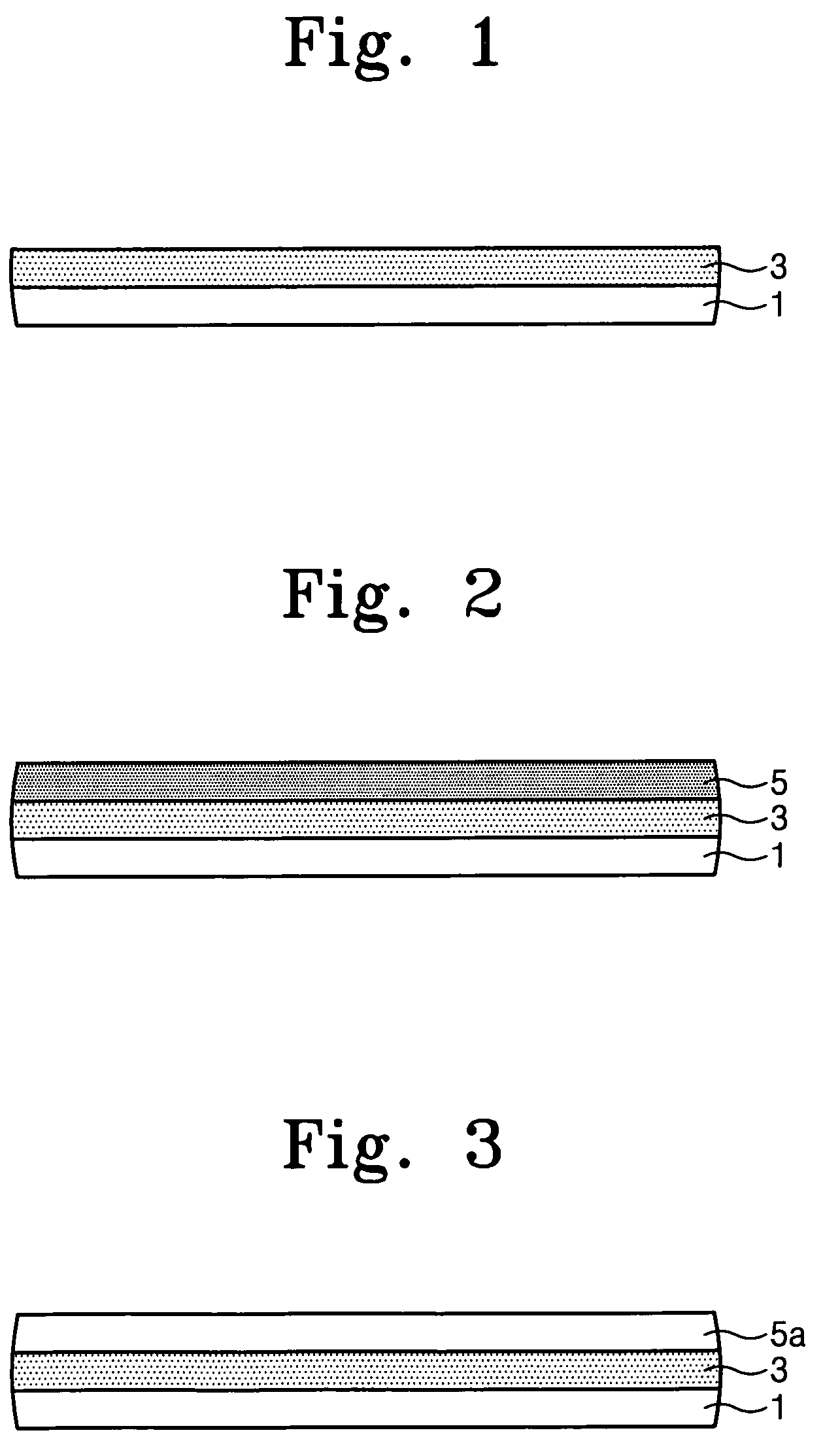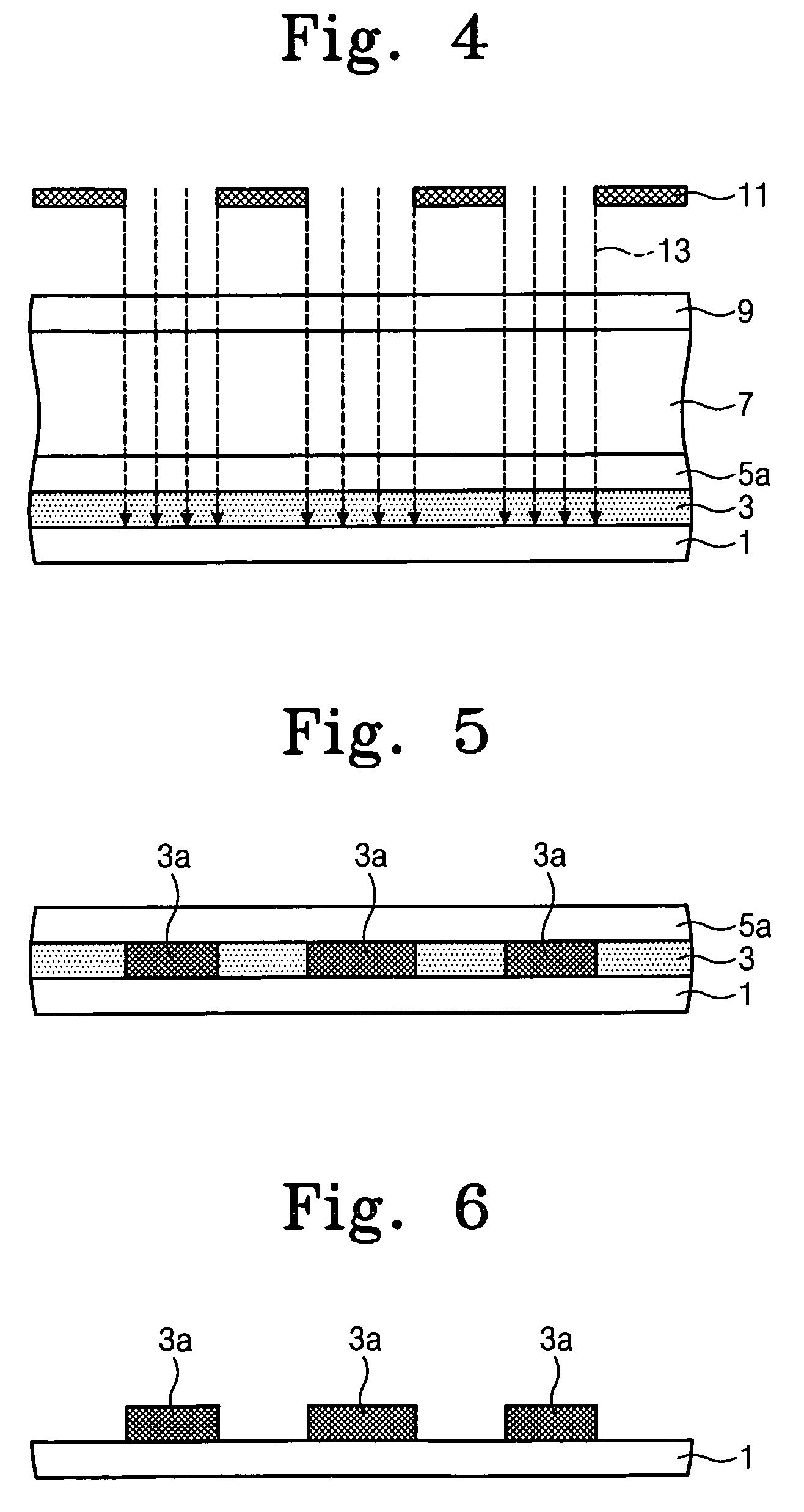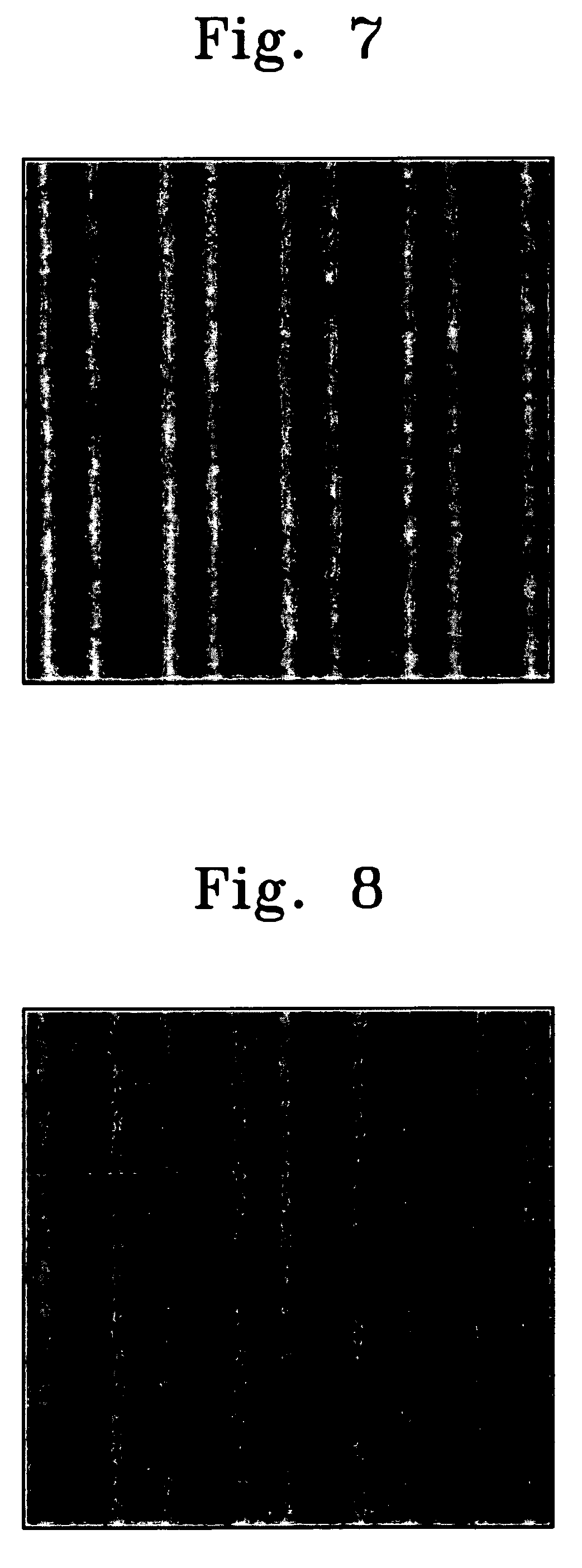Polymer, top coating layer, top coating composition and immersion lithography process using the same
a technology of polymer and composition, applied in the field of semiconductor devices, can solve the problems of difficult formation of exact photoresist patterns, high cost of exposure equipment used for euv, etc., and achieve the effects of finer and more exact patterning, strong hydrophobicity, and increased solubility
- Summary
- Abstract
- Description
- Claims
- Application Information
AI Technical Summary
Benefits of technology
Problems solved by technology
Method used
Image
Examples
experimental example 1
A. Synthesis of Polymer I Having a Deuterated Carboxyl Group
[0068]Methanol-d4(5.0 g) and triethylamine (20 mg) were added to poly(methylvinylether-alt-maleicanhydride) (average molecular weight (MW) of ˜216,000, 2.0 g) in 100-ml flask under N2 atmosphere. The mixture was stirred for 6 days at 50° C. The volatile components were removed by evaporation at reduced pressure. The residue was dissolved in anhydrous THF. The solution was added dropwise into an excess amount of hexane. A white precipitate was collected and dried at an ambient temperature under high vacuum, yielding a white solid (Polymer I, 2.36 g).
[0069]Methanol-d4 has the following chemical structure:
[0070]
[0071]Polymer I has the following chemical structure:
[0072]
B. Application of Polymer I as a Top Coating Layer in a Photolithography Process Under Atmospheric Conditions
[0073]An anti-refractive coating for 193 nm exposing wavelength was spin coated onto an 8-inch bare Si wafer and baked to form an ARC film having a thick...
experimental example 2
Control of Experimental Example 1
A. Synthesis of Polymer II Having a Carboxyl Group
[0077]Methanol (5.0 g) and triethylamine (20 mg) were added to poly(methylvinylether-alt-maleicanhydride) (Sigma Aldrich, MW ˜216,000, 2.0 g) in 100-ml flask under N2 atmosphere. The mixture was stirred for 6 days at 50° C. The volatile components were removed by evaporation at reduced pressure. The residue was dissolved in anhydrous THF. The solution was added dropwise in an excess amount of hexane. A white precipitate was collected and dried at ambient temperature under high vacuum, yielding a white solid (Polymer II, 2.82 g).
[0078]Polymer II has the following chemical formula:
[0079]
B. Application of Polymer II as a Top Coating Layer in a Photolithography Process Under Atmospheric Conditions
[0080]An anti-refractive coating for 193 nm exposing wavelength was spin coated onto an 8-inch bare Si wafer and baked to form an ARC film having a thickness of about 300 angstroms. A photoresist for 193 nm expos...
experimental example 3
A. Synthesis of Polymer III Having a Deuterated Carboxyl Group
[0083]1) Synthesis of Precursor Polymer I
[0084]Allyl-2,2,2-trifluoroether (1.4 g) and maleicanhydride (0.98 g) in anhydrous THF (2.0 ml) were heated at 50° C. overnight in the presence of AIBN (164 mg) under a N2 atmosphere. The reaction mixture was added dropwise in an excess amount of hexane / isopropanol (4:1). A white precipitate was collected and dried at ambient temperature under high vacuum, yielding a white solid (Precursor Polymer I, 1.57 g).
[0085]Precursor Polymer I has the following chemical formula:
[0086]
[0087]2) Ring-Open Reaction of Polymer Precursor I with Deuterated Alcohol
[0088]Methanol-d4 (5.0 g) and triethylamine (10 mg) were added to Precursor Polymer I (1.0 g) synthesized above in 100-ml flask under N2 atmosphere. The mixture was stirred for 6 days at 50° C. The volatile components were removed by evaporation at reduced pressure. The residue was dissolved in anhydrous THF. The solution was added dropwis...
PUM
| Property | Measurement | Unit |
|---|---|---|
| wavelength | aaaaa | aaaaa |
| refractive index | aaaaa | aaaaa |
| refractive index | aaaaa | aaaaa |
Abstract
Description
Claims
Application Information
 Login to View More
Login to View More - R&D
- Intellectual Property
- Life Sciences
- Materials
- Tech Scout
- Unparalleled Data Quality
- Higher Quality Content
- 60% Fewer Hallucinations
Browse by: Latest US Patents, China's latest patents, Technical Efficacy Thesaurus, Application Domain, Technology Topic, Popular Technical Reports.
© 2025 PatSnap. All rights reserved.Legal|Privacy policy|Modern Slavery Act Transparency Statement|Sitemap|About US| Contact US: help@patsnap.com



